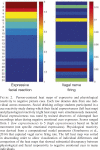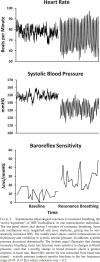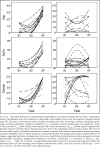The Translational Value of Psychophysiology Methods and Mechanisms: Multilevel, Dynamic, Personalized
- PMID: 29553350
- PMCID: PMC6019769
- DOI: 10.15288/jsad.2018.79.229
The Translational Value of Psychophysiology Methods and Mechanisms: Multilevel, Dynamic, Personalized
Abstract
Objective: It has been nearly 15 years since Kazdin and Nock published methodological and research recommendations for understanding mechanisms of change in child and adolescent therapy. Their arguments and enthusiasm for research on mechanisms of behavior change (MOBCs) resonated across disciplines and disorders, as it shined a light on the crucial importance of understanding how and for whom treatments instigate behavior change and how therapeutic mechanisms might be extended to "situations and settings of everyday life." Initial efforts focused on how psychotherapy works and linear models, yet the use of theory to guide the study of mechanisms, and laboratory experiments to manipulate them, is broadly applicable.
Method: This article considers dynamic physiological processes that support behavior change. Specifically, it examines the utility of psychophysiological methods to measure and promote behavior change. Moreover, it embeds the baroreflex mechanism, a well-defined heart-brain feedback loop, within the theories and strategies of MOBC research.
Results and conclusion: Individuals' subjective and expressive experience of change does not always align with their physiological reactivity. Thus, behavior change may be best understood when concurrently assessed across multiple biobehavioral levels. Further, behavior is initiated in the moment, often before conscious deliberation, suggesting that multilevel behavior change research may benefit from real-time methodological designs. Last, substance use trajectories vary widely, suggesting that different MOBCs are more or less active in individuals depending on their personal constituency and the functional need that their substance use serves; thus, methods that are amenable to personalized modeling approaches are important.
Figures




Similar articles
-
Advancing Analytic Approaches to Address Key Questions in Mechanisms of Behavior Change Research.J Stud Alcohol Drugs. 2018 Mar;79(2):182-189. doi: 10.15288/jsad.2018.79.182. J Stud Alcohol Drugs. 2018. PMID: 29553344 Free PMC article.
-
Neuroimaging mechanisms of change in psychotherapy for addictive behaviors: emerging translational approaches that bridge biology and behavior.Psychol Addict Behav. 2013 Jun;27(2):329-35. doi: 10.1037/a0031491. Psychol Addict Behav. 2013. PMID: 23815447 Free PMC article.
-
The contributions of cognitive neuroscience and neuroimaging to understanding mechanisms of behavior change in addiction.Psychol Addict Behav. 2013 Jun;27(2):336-50. doi: 10.1037/a0032435. Epub 2013 Apr 15. Psychol Addict Behav. 2013. PMID: 23586452 Free PMC article. Review.
-
Design and evaluation of a context-aware model based on psychophysiology.Comput Methods Programs Biomed. 2020 Jun;189:105299. doi: 10.1016/j.cmpb.2019.105299. Epub 2019 Dec 27. Comput Methods Programs Biomed. 2020. PMID: 31935581
-
Mechanisms of change in adolescent substance use treatment: how does treatment work?Subst Abus. 2014;35(4):344-51. doi: 10.1080/08897077.2014.925029. Subst Abus. 2014. PMID: 24901750 Free PMC article. Review.
Cited by
-
Effects of arousal modulation via resonance breathing on craving and affect in women with substance use disorder.Addict Behav. 2022 Apr;127:107207. doi: 10.1016/j.addbeh.2021.107207. Epub 2021 Dec 17. Addict Behav. 2022. PMID: 34953433 Free PMC article. Clinical Trial.
-
Theoretical implications and clinical support for heart rate variability biofeedback for substance use disorders.Curr Opin Psychol. 2019 Dec;30:92-97. doi: 10.1016/j.copsyc.2019.03.008. Epub 2019 Apr 2. Curr Opin Psychol. 2019. PMID: 31055246 Free PMC article. Review.
-
Getting to the Heart of Low Sensitivity to Alcohol: Context Moderates Low Cardiovascular Response to Alcohol in Persons With a Family History of Alcohol Use Disorder.Alcohol Clin Exp Res. 2020 Mar;44(3):589-599. doi: 10.1111/acer.14293. Epub 2020 Feb 17. Alcohol Clin Exp Res. 2020. PMID: 31984514 Free PMC article.
-
Pilot examination of stress, heart rate variability, and alcohol craving and use among female veterans.Front Psychiatry. 2022 Sep 9;13:886801. doi: 10.3389/fpsyt.2022.886801. eCollection 2022. Front Psychiatry. 2022. PMID: 36159929 Free PMC article.
-
The Process of Heart Rate Variability, Resonance at 0.1 hz, and the Three Baroreflex Loops: A Tribute to Evgeny Vaschillo.Appl Psychophysiol Biofeedback. 2022 Dec;47(4):327-340. doi: 10.1007/s10484-022-09544-4. Epub 2022 May 10. Appl Psychophysiol Biofeedback. 2022. PMID: 35536496 Free PMC article. No abstract available.
References
-
- Bär K.-J., Boettger M. K., Boettger S., Grotelüschen M., Neubauer R., Jochum T., Voss A. Reduced baroreflex sensitivity in acute alcohol withdrawal syndrome and in abstained alcoholics. Drug and Alcohol Dependence. 2006;85:66–74. doi:10.1016/j.drugalcdep.2006.03.01. - PubMed
-
- Bates M. E., Buckman J. F. Emotional dysregulation in the moment: Why some college students may not mature out of hazardous alcohol and drug use. In: White H. R., Rabiner D. L., editors. College drinking and drug use. New York, NY: Guilford Press; 2011. pp. 83–101.
-
- Bechara A. Decision making, impulse control and loss of willpower to resist drugs: A neurocognitive perspective. Nature Neuroscience. 2005;8:1458–1463. doi:10.1038/nn1584. - PubMed
-
- Benarroch E. E. The central autonomic network: Functional organization, dysfunction, and perspective. Mayo Clinic Proceedings. 1993;68:988–1001. doi:10.1016/S0025-6196(12)62272-1. - PubMed

